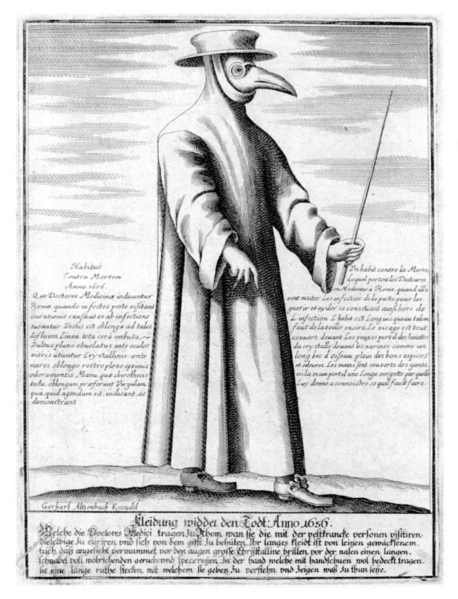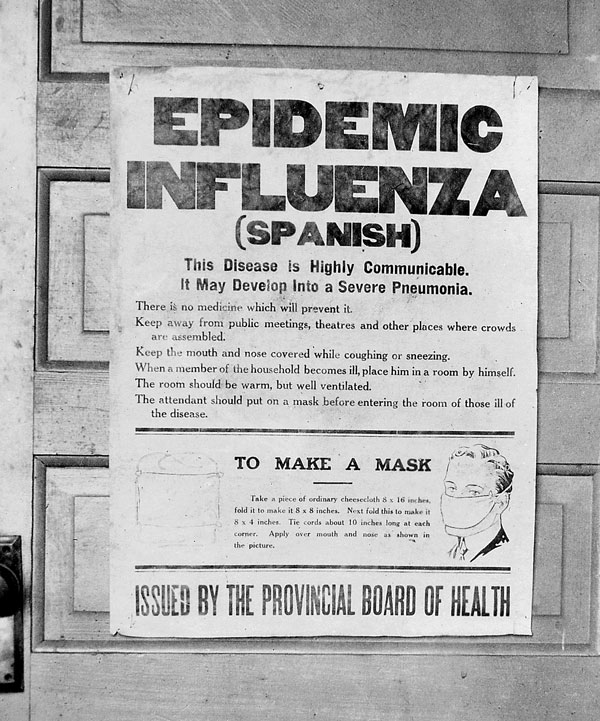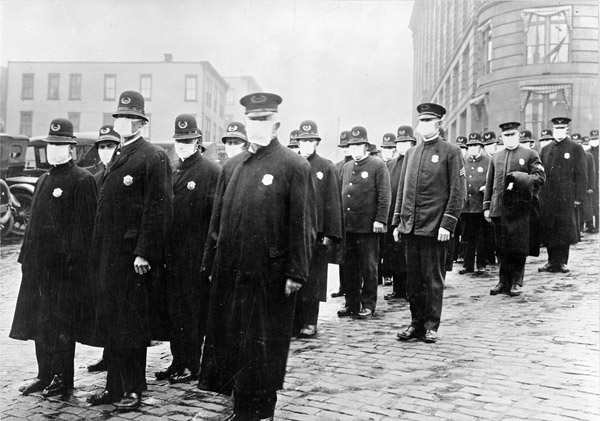I had a great conversation with my mortgage bank today. I’ve got a six month don’t have to pay my mortgage thing, but I can if I want to. I want to. Sometimes I have a hard time doing it especially since social security comes in on on days of the month and we don’t actually have all the money collected until nearly the end of the month.
She said: “This plan runs out in November, but if you call in November, we can give you another six months.”
“I’m betting,” I said, “that we are going to be having a big resurgence of COVID-19 by then.”
“I think so too,” she said. “People are such idiots. They are all running around and partying and now we are starting to see a lot of younger people dying. And even if they are okay, don’t they have families to protect? Grandparents? Aunts and uncles?”
It turns out that epidemics and pandemics all end the same way. People get weary of quarantine. Some of them go crazy and decide come what may, they don’t want the rest of their life to be spent hiding. Having this attitude is helped if you aren’t part of the “if you get it, you’re dead” category of folks, although many people who were not supposed to be at risk die anyway. It turns out that a lot of people have physical issue they don’t know about … until they get sick and then very, very sick. And sometimes, dead.
Bubonic or Pneumonic plague has no effective vaccine. These days, heavy doses of antibiotics will help, but it’s a powerful disease and even with antibiotics, it often kills. Its favorite targets are young, healthy people, not very young or very old folks. Why don’t we see Bubonic Plague these days?
We do. Since it showed up in Europe in 1348 and decimated the continent’s population, it has made its way around the world, killing many millions, including in the U.S. where the last cases were in 1900 and again in 2015 when the U.S. had 1,036 cases. In 2015, 16 people in the Western United States developed Plague, including 2 cases in Yosemite National Park.
It has not disappeared. It is lying low and could come back. Let’s hope not!
How did it end? The most popular theory of how all Plagues end is through the implementation of quarantines. The uninfected — when they have the means — either stay at home or move to the country. Eventually, the plague stops being dependent on fleas and becomes Pneumonic, which meant that coughed up droplets or sneezes spread the disease from person to person, no sick rats or fleas required.
While it seems like the Black Death was the only instance of the bubonic plague there have been many other bouts with it through the centuries, both earlier (Justinian’s Plague during the Roman Empire days) and a pretty big one in the mid-17th century London and China and /india in the 1900s.
Three great world pandemics of plague recorded, in 541, 1347, and 1894, each time causing devastating mortality of people and animals across nations and continents. The 17th century was not a pandemic and was largely confined to London.
On more than one occasion plague irrevocably changed the social and economic fabric of society.It was also going around when Henry VIII was a young King in England. A pandemic of Plague started in Asia in the 19th century. The World Health Organization didn’t consider this pandemic officially over until 1959 when the annual deaths finally dropped to fewer than 200.

Mask as worn in the 17th century. plague pandemic and included a waxed coverall which was supposed to protect the doctor — hazmat suit for 1657
In 1920 Galveston, that “oozy prairie,” as early settlers described it, was only 20 years removed from the devastating 1900 hurricane. Then came Plague. A 17-year-old feed store worker was the first to contract and die from the disease. The first case was diagnosed in early June 1920. Over the following months, eighteen people were diagnosed. Seven survived.
There was initial mishandling with Plague. In two cases the doctor’s notes that patient isolation “was not accomplished as rapidly as desired,” both because families were slow to call in a doctor and because the doctor didn’t consider bubonic plague to be a possibility.
Vaccines have not been found for Bubonic Plague. It’s a bacteria, not a virus. Vaccinations work on viruses and are successful for diseases that don’t mutate. Smallpox and polio are two major conquests in epidemiology. All Coronaviruses are rapid mutators, so whether or not they will find a long-term effective vaccine is questionable. They might find an annual vaccine or a cure, but a long-lasting vaccination is less likely.
The plague bacteria, Yersinia pestis, had lain dormant in China’s Gobi Desert for centuries. But in the 1300s, it emerged with a vengeance, fanning out via trade routes from Asia to Europe and killing millions of people along the way. The plague was transmitted by fleas harbored by rats, which flourished in the overcrowded, filthy cities of the Middle Ages. By the end of the 1500s, between a third and half of Europe’s population had died from the Black Death.
Even during the 1900s, the plague still killed millions of people, but since then, the advent of better hygiene in cities and swift treatment with antibiotics has reduced this killer.
Human reaction to pandemic outbreaks hasn’t changed at all. We blame others for it. We persecute others for it. We run away it if we can. The better-off survive while the poorest pay full price.
People believe rumors especially when they like the rumors better than reality. In the end, life goes on, but not like before the plague. This “return to normal” is not a return to the world before. It’s a social return only. It doesn’t mean people stop dying. Viruses don’t care whether you believe in them or not. They aren’t even alive.
Epidemics come and they go and the world doesn’t recover in a few weeks or months or sometimes, ever. Never in the history of the world has that happened. Nations fall, governments collapse, economies are decimated. Plagues change everything, not just human lives.
We are in the crazy stage where people are crowding onto beaches, partying heartily, acting like they are the only people in the world and if they want to risk their lives and yours too, well, it’s their RIGHT. I probably missed that particular amendment to the constitution.
Categories: #Health, Coronavirus - Covid 19, Culture, Epidemic - Pandemic - Plague, History, medieval history












 PLAGUE’S END
PLAGUE’S END  HISTORY AND PLAGUE’S END – Marilyn Armstrong
HISTORY AND PLAGUE’S END – Marilyn Armstrong
Though….healthcare is just slightly more advanced in 2020 as opposed to 1918/…..just saying. Praying for all who have been or will be impacted.
LikeLike
Better, yes, but we don’t have anything that cures this. I’m betting this is going to kick medical technology up — just like the flu did in 1918-1919.
LikeLike
Great story Marilyn. My son and I were just discussing the Spanish Flu and how we are no strangers to ‘social distancing’, However, I didn’t realize that it caused more deaths than WW1.
LikeLiked by 1 person
In terms of size and numbers, it was “the big one.” But because it really took hold in the trenches of World War I, it tends to get forgotten. We have a very short memory span and hardly anyone who didn’t study it knows much about World War I.
Masks and everything, just like now — and almost exactly 100 years ago.
LikeLiked by 1 person
History. What a bugger!
LikeLike
We too are expecting a second wave as so many people are ignoring social distancing, mask wearing and the rest. It’s scary.
LikeLiked by 1 person
I hope it won’t happen, but it has happened in every other pandemic and we aren’t any smarter this time than last time or the time before. The only thing that could happen is that the virus might mutate into something milder. I’m not holding my breath.
LikeLiked by 2 people
Nor am I!
LikeLike
I really want to be wrong about this. It will probably happen in some states, but not all of them. I hope NOT here.
LikeLiked by 1 person
I want to be wrong too but it’s not looking very good here with our incompetent and dithery government.
LikeLike
It’s a sad tail of human folly.
Leslie
LikeLiked by 1 person
We’ve been stupid every time, so no reason to assume we’ve suddenly gotten smarter.
LikeLiked by 1 person
I think Nature has let us run up one helluva bill in abuse of her gifts, and now it’s time to pay.
LikeLiked by 1 person
I hope the price isn’t the end of earth as home to humans, but it could be.
LikeLiked by 1 person
Patricia, the piper is waiting. No checks in the mail.
LikeLike
Well, just when I was feeling hopeful that COVID has been controlled (at least in New York State), and while I’m still somewhat fearful of that predicted second wave – now I have to worry that bubonic plague could come back at any time? Definitely not the uplifting news I needed today. (BTW, if I have to wear a mask anyway, maybe I could find one of those 17th century masks with the long, beaky nose. That certainly would keep people away from me.)
LikeLike
The thing is, pandemics/epidemics/plagues can and do break out ANY time. We just have really short memories.
LikeLiked by 1 person
I stand and stare in amazement at the groups of people, all chattering away, bare faced and oblivious. Cries of “It’s a HOAX!” and “It’s not as bad as “they” say” are foisted into the conversation as if that ideology is safe guard enough. My family has had one scare (the youngest of us, who works in a restaurant and went to a local lake with friends). He woke with chest tightness and a wickedly sore throat and was whisked off to the hospital where they did the test on him (if it’s as he described, I NEVER want to be tested. No.) and told him it would be a 72 – 96 hour wait for results. It turned into 6 days before they had the result which was negative. He had to quarantine himself, which he did. His father, my brother, works in hospitals. He’s never been tested and doesn’t exhibit any symptoms. He is examined and masked every time he enters one though. I read these posts of yours with the disturbing facts and I wonder why/how mankind can still be so dim-witted about this deadly situation, even with history to back up the facts. I continue to think plagues are just nature’s way of ‘natural selection’ and weeding out the weak ones…which in this case are human beings. Stay safe!
LikeLike
But we’ve ALWAYS been stupid. There have been a lot of pandemics, including the biggest one of all in 1918-1919 which killed 50 million people. We ARE stupid. We want to blame someone. Pick someone who isn’t exactly like you and blame them. For some reason, a lot of people feel that having blamed something, the problem has been solved.
We really are stupid.
LikeLike